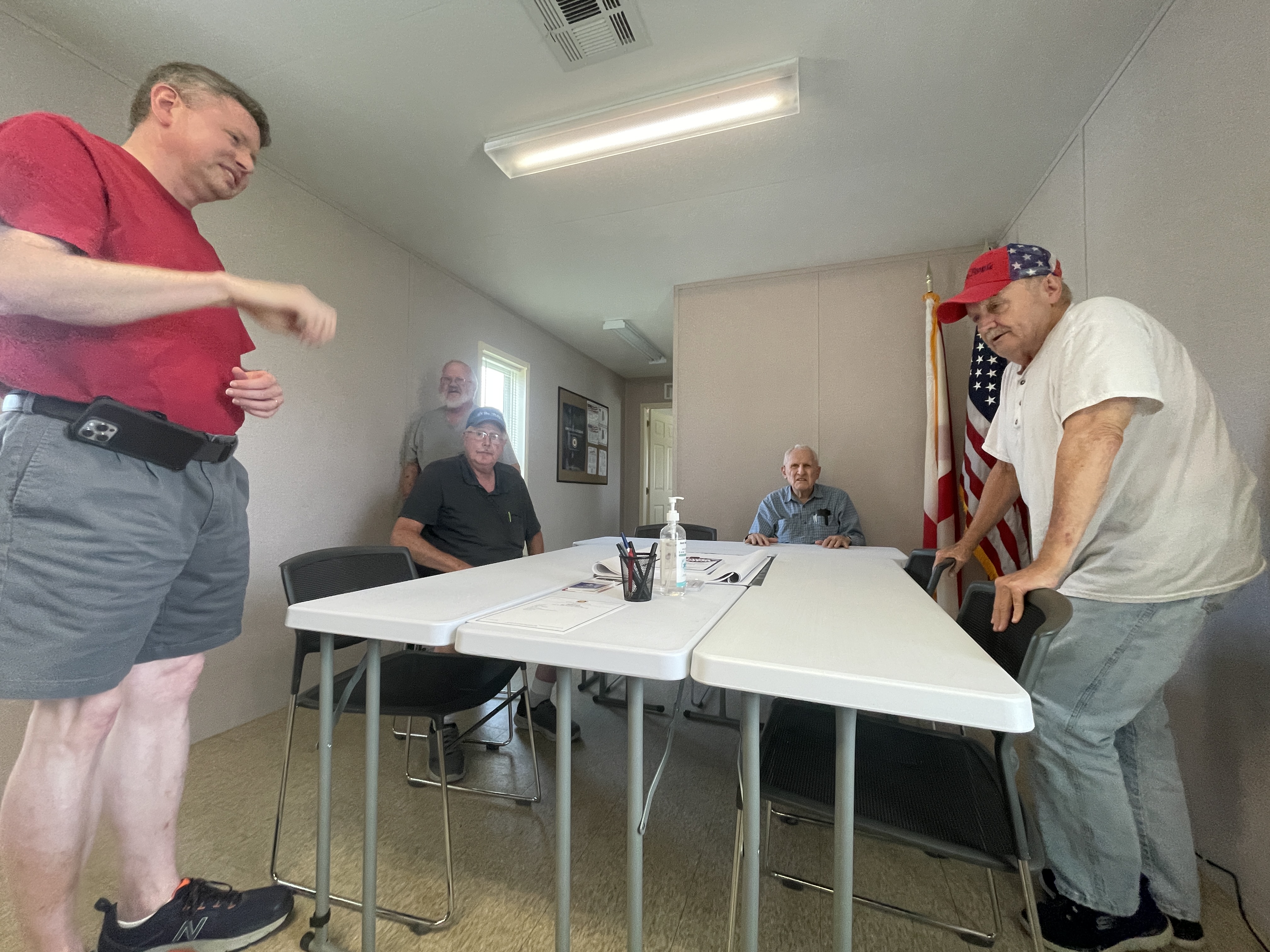Osteoporosis and you
Published 3:33 pm Wednesday, May 21, 2008
Health Watch by Sherry Mullenix
The North Jefferson News
Osteoporosis is the thinning of bone tissue and loss of bone density over time.
Osteoporosis is the most common type of bone disease. There are currently an estimated 10 million Americans suffering from osteoporosis.
Since there are no symptoms, you might not realize your bones are weak until it’s too late. You either fall and break a bone, or you break a bone and then fall. This not only results in a lot of pain and possible surgery, but also loss of mobility. Dependence on others for daily activities such as personal hygiene, dressing and walking becomes a harsh reality.
Osteoporosis can affect any bone in the body, but the most common are the hip, wrist, and spine. When this condition affects the spine, it can cause especially serious problems for women. Fractures in women suffering from osteoporosis can occur from everyday activities such as climbing stairs, lifting objects or even bending forward.
What factors cause an individual to have a higher chance of getting osteoporosis?
• Being female
• Small, thin body (under 127 pounds)
• Family history of osteoporosis
• Being postmenopausal or an advanced age
• Caucasian or Asian race
• Abnormal absence of menstrual periods
• Having had an eating disorder
• Low testosterone levels in men
• A diet low in dairy products or other sources of Calcium and Vitamin D
• Inactive lifestyle
• Long-term use of glucocorticoids (used in treatment of other diseases, such as lupus, arthritis, or asthma)
There are tests available which will help you find out your bone strength. These tests are called Bone Density and DEXA. You should discuss with your physician which type of test is best for you.
If you are 65 and older, you should get a bone density test. If you are between the ages of 60 and 64, weigh less than 154 pounds and don’t take estrogen, don’t wait until you are 65 — you have a high risk for breaks now.
Since bones are made of calcium, the best way to prevent osteoporosis is to get enough calcium in your diet. You get calcium through foods, liquids or by taking calcium supplements. The recommended daily intakes of calcium are:
• Age 9 – 18: 1300mg per day
• Age 19 – 50: 1000mg per day
• Age 51 and over: 1200mg per day
It is also important to get enough Vitamin D each day since it helps the body absorb calcium. Vitamin D is gotten through exposure to sunlight. You need 10-15 minutes of sunlight a day to the hands arm and face two-three times a week. If your Vitamin D concentrations are low, your physician may prescribe a Vitamin D supplement that you could take once a week.
Other nutrients such as Vitamin A, Vitamin C, Magnesium, and Zinc, as well as protein help build strong bones. Milk provides many of these nutrients. You also get these and other necessary nutrients from eating a well balanced diet.
There are several treatment options for osteoporosis:
• Alendronate (FOSAMAX): This drug belongs to a call of drugs called the biophosphates and is approved for the prevention and treatment of osteoporosis.
• Risedronate (ACTONEL): Like Alendronate, this drug is approved for the prevention and treatment of osteoporosis.
• Ibandronate (BONIVA): This drug is also a biphosphate but has the benefit of once a month dosage instead of weekly.
• Calcitonin (MIACALCIN): This is a naturally occurring hormone involved in calcium regulation and bone metabolism. Calcitonin can be injected or taken as a nasal spray. This drug is recommended for women who are at least five years post-menopausal. It slows bone loss and increases spinal bone density.
• Raloxifene (EVISTA): This drug is a selective estrogen receptor modulator and has many estrogen-like properties. It is approved for the prevention and treatment of osteoporosis and can prevent bone loss at the spine, hip and other areas of the body.
• Estrogen Therapy (ET), or Hormone Therapy (HT): These drugs, which have been used for the treatment and symptoms of menopause, are also used to prevent bone loss. Recent studies have shown that this may not be the best option for many women.
• Parathyroid Hormone or Teriparatide (Forteo): This form of parathyroid hormone is approved for the treatment of osteoporosis in postmenopausal women and men who are at high risk for a fracture. It helps new bone form while increasing bone density. It has been shown to reduce fractures in postmenopausal women in the spine, hip, foot, ribs and waist. This drug is administered by daily self-injection for up to 24 months.
You can learn more about osteoporosis by contacting the National Osteoporosis Foundation at 1-877-868-4520 or visit them at http://www.nof.org/.
Sherry Mullenix (J.D., R.N.) co-owns The Pharmacy in Mount Olive with her husband, Steve Mullenix (R.Ph). They can be reached at 631-1201.





